Choosing the right seafood is crucial for individuals with diabetes.
Some options can harm blood sugar control and overall health. This blog identifies which seafood to avoid and offers actionable advice for better choices.
Take control of your diet and safeguard your health with these essential tips!
Key Takeaways:
- High-Cholesterol Seafood to Avoid: Shellfish, such as shrimp and lobster, can be problematic for diabetics due to their high cholesterol content, which may negatively impact heart health if consumed in excess.
- Seafood Prepared with Unhealthy Methods: Fried seafood or seafood covered in heavy sauces can spike blood sugar levels and add unnecessary fats, making them less suitable for individuals with diabetes.
- Opt for Fresh, Lean Options: Fresh fish, such as salmon, tuna, or cod, provide beneficial omega-3 fatty acids and lean protein, making them excellent choices for managing diabetes effectively.
Why Seafood and Food Choices Matter for Diabetics
Seafood to Avoid for Diabetics
Not all seafood is good for diabetic health. While many options, such as salmon and tuna, are excellent choices, others may hurt your blood sugar levels and overall wellness.
Here’s a breakdown of seafood to avoid and why:
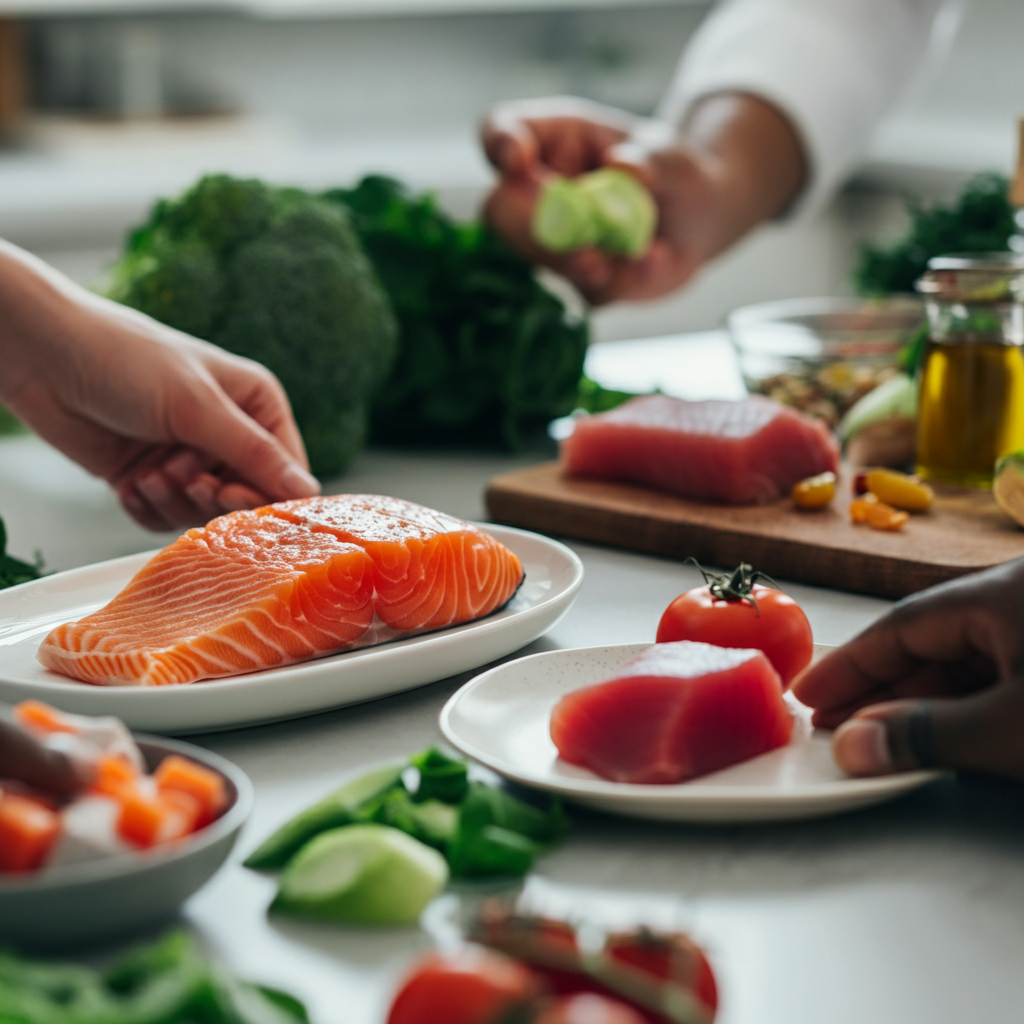
1. Breaded and Fried Seafood
- Restaurants often serve fish and shrimp coated in batter and fried.
- The batter adds unhealthy carbs and trans fats, which elevate blood sugar.
- Example to Avoid: Fried catfish, deep-fried shrimp.
- What to do? Opt for grilled, baked, or steamed versions instead.
2. High-Mercury Fish
- Some large fish accumulate mercury. High mercury levels can harm the nervous system.
- Examples include: Swordfish, King Mackerel, and Tilefish.
- Safer Choices: Stick to seafood like salmon, sardines, and trout, which are low in mercury.
3. Smoked or Salt-Cured Fish
- These fish are high in sodium, increasing the risk of high blood pressure.
- Example to Avoid: Smoked salmon or dried salted cod.
- Why it matters? Too much sodium can aggravate existing diabetic complications.
4. Imitation Seafood
- Imitation crab or other “fake” seafood contains added starches or sugars.
- These additives increase carb content, affecting blood sugar.
- Pro Tip: Read food labels and choose genuine seafood.
Nutritional Balance Tip
- Always pair your seafood with non-starchy vegetables like broccoli or spinach.
- This ensures your meal is nutrient-rich and blood sugar-friendly!
By being selective, diabetics can manage their blood sugar levels and reap the benefits of seafood. Choose wisely for a healthier lifestyle!
What Seafood Is Bad for Diabetics?
While seafood offers numerous health benefits, certain types are not suitable for individuals with diabetes. Opt for fresh or minimally processed seafood for improved quality, as preparation methods or hidden ingredients can often compromise its quality. These choices can impact blood sugar levels and overall health. Here’s a simple breakdown:
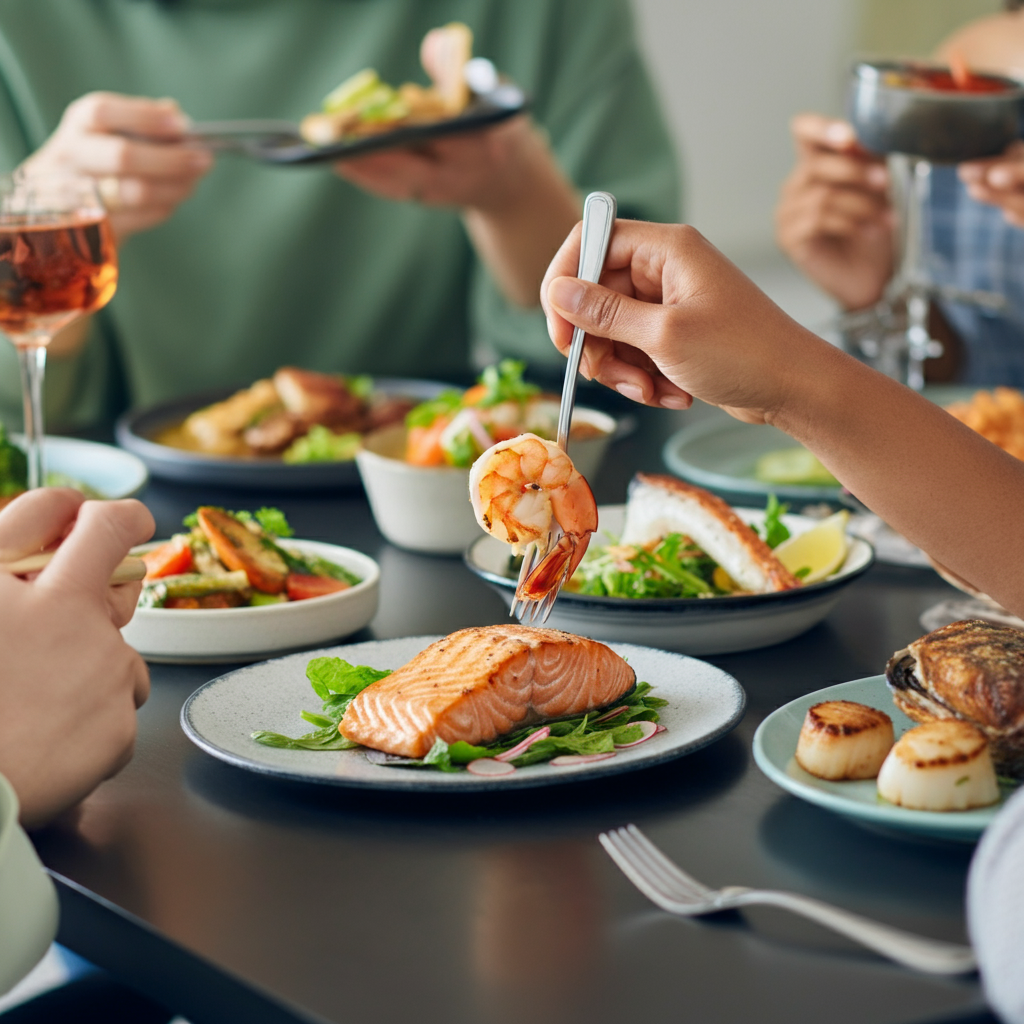
1. Fried and Breaded Seafood
- Fried fish or shrimp is often coated in breadcrumbs or batter, which are high in carbs.
- The frying process adds unhealthy fats that affect heart health.
- Example: Beer-battered fish or popcorn shrimp.
- Tip: Choose grilled, baked, or steamed seafood instead.
2. Smoked or Cured Seafood
- Smoked salmon, mackerel, or herring is often loaded with added salt.
- Excessive sodium intake can increase blood pressure and compromise cardiovascular health.
- Example: Pre-packaged smoked salmon with flavor enhancers.
- Tip: Look for low-sodium options and consume in moderation.
3. Canned Seafood in Syrups or Sauces
- Tuna or crab in sweetened sauces contains hidden sugars that spike blood sugar.
- Heavily processed canned seafood is nutrient-poor compared to fresh varieties.
- Example: Canned crab meat in sweet chili sauce.
- Tip: Opt for seafood canned in water or olive oil with no added sugar.
4. Seafood-Based Processed Foods
- Items like fish sticks and imitation crab are heavily processed and include additives.
- They lack whole nutrients and often come with added carbs and preservatives.
- Example: Surimi (imitation crab sticks).
- Tip: Opt for fresh or minimally processed seafood for improved blood sugar control.
5. High-Mercury Seafood
- Although low-carb, mercury-laden fish are harmful when consumed excessively.
- High mercury levels can damage nerves and organs, particularly dangerous for diabetics.
- Example: Swordfish, king mackerel, and shark.
- Tip: Choose low-mercury seafood like salmon, cod, or tilapia.
Quick Recommendations for Safer Choices
- Always check food labels for hidden sugars and sodium.
- Stick to natural, fresh options whenever possible.
- Avoid seafood dishes with creamy or rich sauces.
By avoiding these less favorable options, people with diabetes can enjoy seafood safely without compromising their health.
Best Seafood Choices for Diabetics
Eating seafood can be a healthy part of a diabetic-friendly diet. Selecting the right types of seafood can lead to improved blood sugar management, enhanced heart health, and overall well-being.
Here’s a simple guide to the best seafood for diabetics:
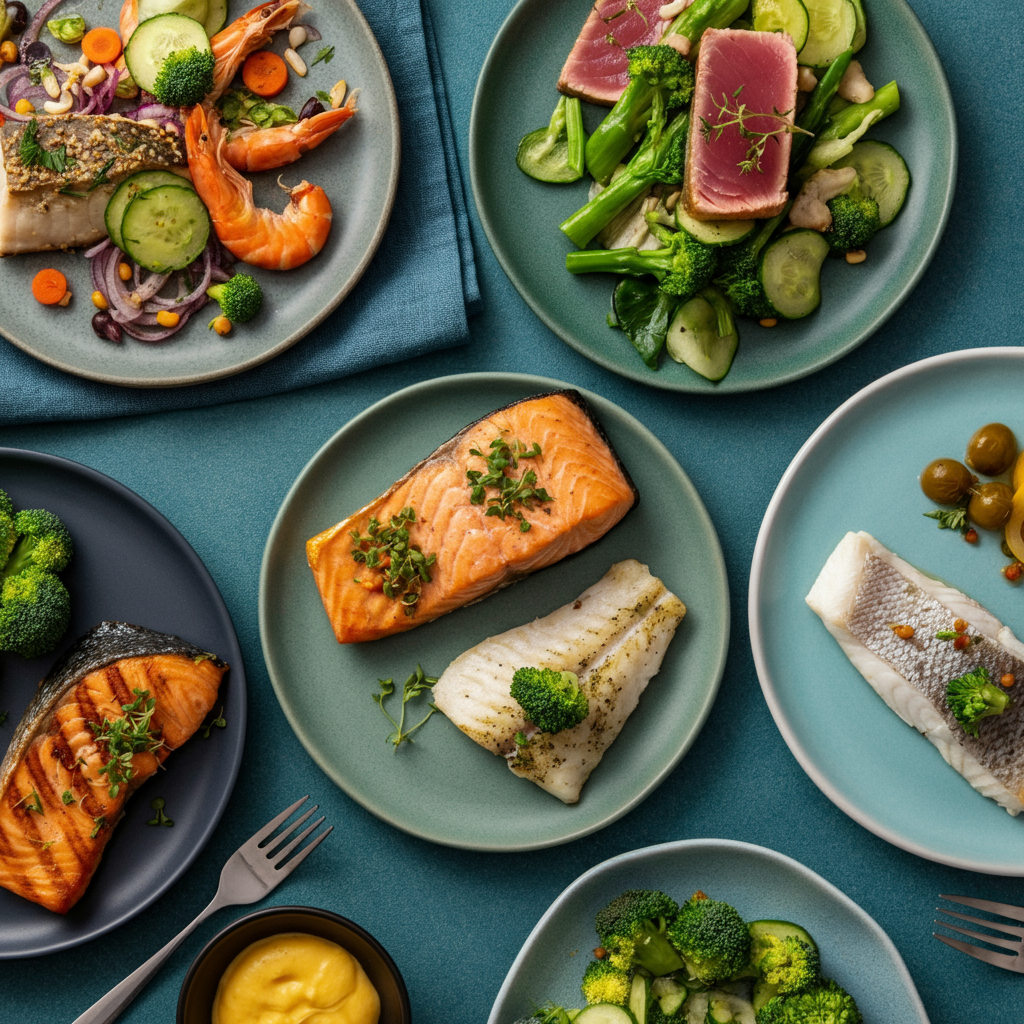
Selecting the right types of seafood can lead to improved blood sugar management, enhanced
1. Fatty Fish – Rich in Omega-3s
Fatty fish are packed with heart-healthy omega-3 fatty acids. These nutrients help reduce inflammation and lower the risk of heart disease, which is particularly crucial for individuals with diabetes. Popular examples include:
- Salmon – Grill or bake it for a flavorful, healthy meal.
- Mackerel – A flavorful choice rich in nutrients.
- Sardines – Eat fresh or canned in water for a convenient option.
Tip: Choose wild-caught salmon for higher nutrient content and avoid farm-raised varieties.
2. Lean Fish – Low-Fat Protein Source
Lean fish are ideal for diabetics due to their low fat content and high-quality protein. This helps maintain muscle mass without adding unnecessary calories. Examples include:
- Cod – Mild flavor and versatile in cooking.
- Tilapia – Perfect for easy meals, like tacos or salads.
- Trout – Great grilled or baked with herbs for maximum taste.
Tip: Opt for fresh cod instead of processed versions to avoid added sodium.
3. Shellfish – High in Protein, Low in Carbs
Shellfish are a tasty and carb-friendly option for diabetics. Try these, but prepare them in healthy ways (e.g., avoid frying):
- Shrimp – Sauté with garlic for a low-calorie dish.
- Crab – Excellent in salads or with light seasoning.
- Lobster – Enjoy it steamed for a premium treat.
Tip: Limit creamy and buttery sauces, as they add unnecessary saturated fats.
4. Canned Options – Affordable and Convenient
For convenience, diabetics can look for canned seafood options packed in water with no added oils or salt. Popular choices include:
- Tuna
- Salmon
- Sardines
Tip: Always check labels for low-sodium and no added sugar options. Try canned tuna recipes for budget-friendly meals.
What to Avoid
Some seafood and preparation styles can negatively impact a diabetic diet. Steer clear of:
- Anything fried or breaded.
- Candied or sugary glazes (e.g., sweet barbecue sauce).
- High-mercury options like swordfish, shark, and king mackerel.
By choosing fresh, lean, and natural seafood options, individuals with diabetes can enjoy satisfying meals that align with their health goals.
Are Green Peas Good for Diabetics?
Yes, green peas are a good choice for diabetics. They are packed with nutrients that help manage blood sugar levels effectively. Here’s why and how you can include them in your diet:
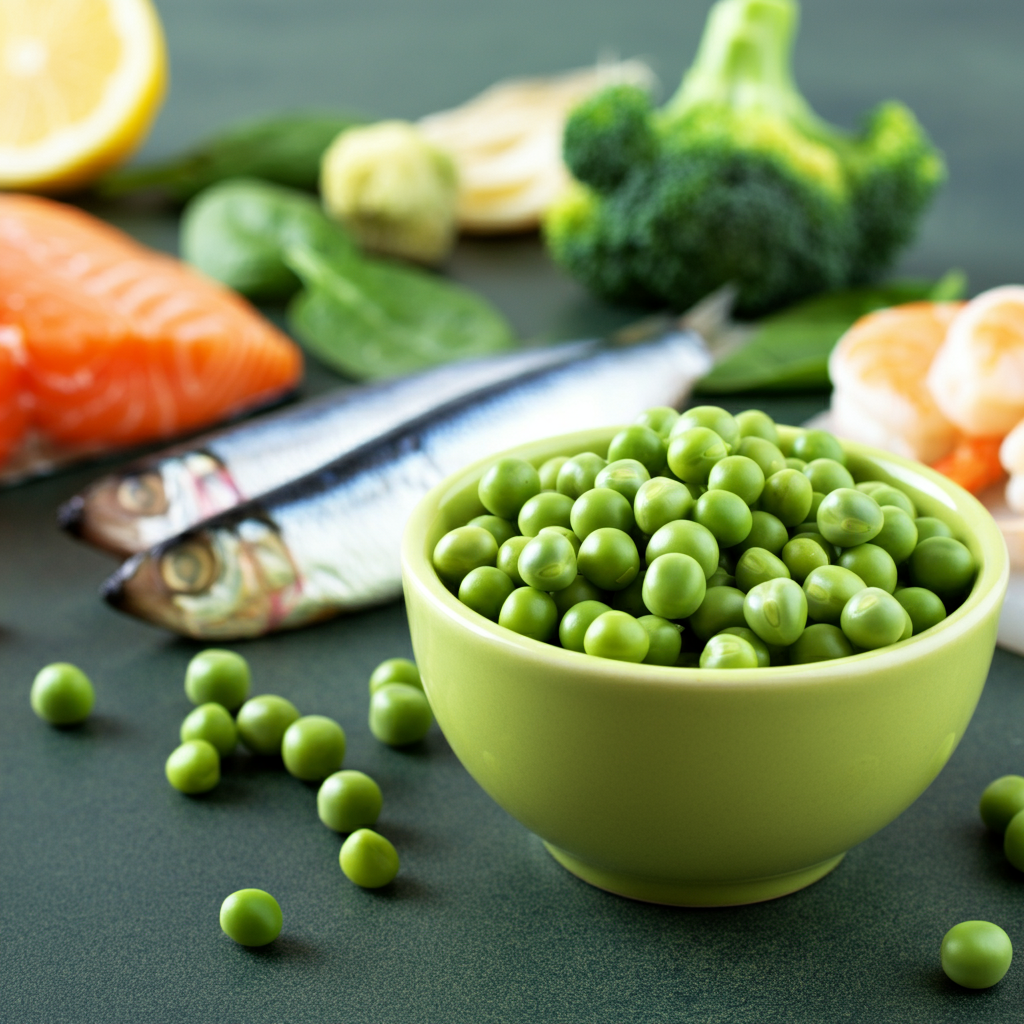
Why Green Peas Are Good for Diabetics
Rich in Fiber
- Green peas provide a high amount of fiber that slows down digestion.
- This helps prevent blood sugar spikes after meals.
Low Glycemic Index (GI)
- Green peas have a glycemic index of about 22–39, making them a low-GI food.
- Foods with a low GI reduce the speed at which they raise blood sugar levels.
Good Source of Protein
- Green peas are high in plant-based protein that supports muscle health and keeps you full longer.
- Protein also plays a role in stabilizing glucose levels.
Packed with Nutrients
- Green peas are rich in vitamins A, C, K, and B-complex, along with minerals like magnesium.
- These nutrients are crucial for maintaining overall health and effectively managing diabetes.
How to Add Green Peas to Your Diet
You can make green peas a part of your meals in the following ways:
- Salads
Toss peas into vegetable salads, along with lettuce, carrots, and cucumbers for extra crunch.
- Soups & Stews
Add green peas to vegetable or chicken soups—they provide flavor and nutrition.
- Stir-Fries
Include peas in stir-fried dishes with broccoli, tofu, or chicken.
- Side Dishes
Combine green peas with brown rice or quinoa for a healthy side dish.
Quick Meal Ideas with Green Peas
Pea and Spinach Salad
- Mix green peas with baby spinach, olive oil, and a squeeze of lemon juice.
Vegetable Soup
- Simmer green peas, carrots, and zucchini in a low-sodium broth for a hearty meal.
Pea & Herb Omelette
- Add a handful of peas and fresh herbs like parsley to your breakfast omelette.
By incorporating green peas in creative ways, you can enjoy their health benefits while keeping meals exciting and diabetes-friendly.
Can Diabetics Eat Mayonnaise?
Yes, diabetics can eat mayonnaise, but moderation is key to making it a healthy choice.
Regular mayonnaise is high in fat and calories but does not directly affect blood sugar levels. However, managing portion size and choosing the correct type of mayonnaise can make a significant difference.

Tips for Choosing Diabetes-Friendly Mayonnaise:
Opt for Healthier Alternatives
- Choose low-fat mayonnaise, as it contains fewer calories and saturated fats.
- Avocado-based mayo is another great option, providing healthy fats that support heart health.
- Look for mayo options labeled as “diabetes-friendly” or “low-calorie”.
Check the Ingredients Label
- Avoid brands with added sugars or unhealthy trans fats.
- Prioritize products with simple ingredients, such as eggs, oil, and vinegar.
Watch the Serving Size
- Stick to 1 tablespoon (or less) per serving to maintain calorie control.
- Pair it with foods that support blood sugar stability, like whole-grain bread or fresh vegetables.
Examples of How Diabetics Can Use Mayonnaise:
Wholesome Sandwich Spread
- Use a thin layer of mayo on whole-grain bread with lean turkey and veggies.
Healthy Salad Dressing
- Mix 1 tablespoon of low-fat mayo with lemon juice and herbs for a creamy dressing.
Deviled Eggs
- Combine mayo with mustard for a protein-packed, diabetes-friendly snack.
Maintaining a balanced diet is essential for managing diabetes. Incorporating small amounts of mayo responsibly can allow you to enjoy its flavor while supporting your health.
How Many Tortillas Can a Diabetic Eat?
Diabetics should be cautious about the type and quantity of tortillas they consume. Tortillas, especially traditional varieties made from refined flour, can quickly raise blood sugar levels. To manage diabetes effectively, follow these core principles:
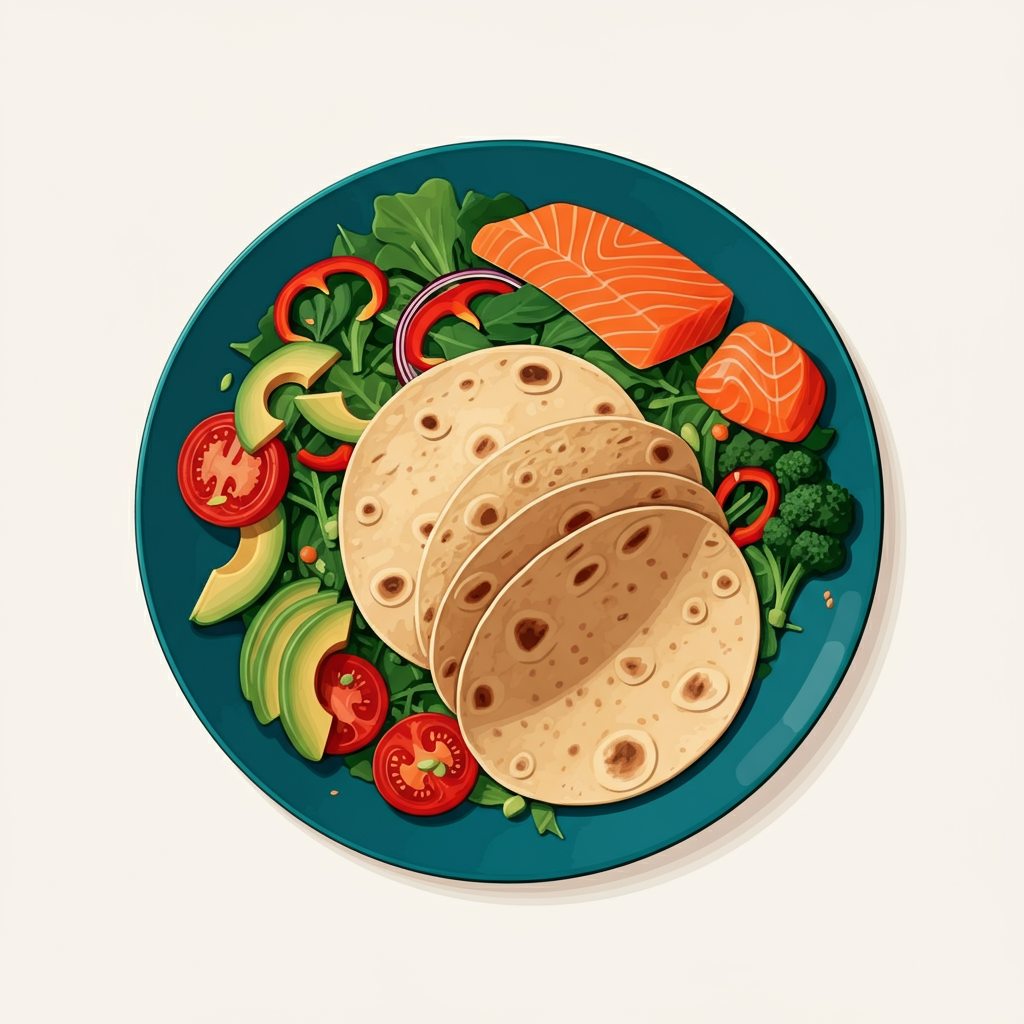
1. Choose the Right Tortillas
- Opt for whole-grain tortillas or low-carb tortillas.
- Whole grains provide fiber that helps control blood sugar.
- Low-carb options significantly reduce carbohydrate intake.
- Avoid white flour tortillas as they can cause rapid blood sugar spikes.
2. Portion Control
- Stick to 1-2 small tortillas per meal (approximately 6 inches in diameter).
- Smaller portions are less likely to impact blood sugar dramatically.
- Check the carbohydrate count on the packaging and adjust your serving, if needed.
- Overeating, even healthier tortillas, can lead to higher glucose levels.
3. Pair Tortillas With Balanced Fillings
- Combine tortillas with diabetes-friendly foods like:
- Lean protein (grilled chicken, turkey, or tofu).
- Non-starchy vegetables (spinach, peppers, onions, or avocado).
- Healthy fats (a drizzle of olive oil or a slice of avocado).
- For example, make a chicken and spinach wrap using a low-carb tortilla.
4. Monitor Blood Sugar
After eating tortillas, check your glucose levels.
This helps determine how your body responds to specific meals.
Make adjustments if your blood sugar rises more than desired.
Example Meal Ideas
- Breakfast Wrap – Scrambled egg whites, spinach, and a whole-grain tortilla.
- Lunch Option – Grilled turkey, avocado, and lettuce in a low-carb wrap.
- Snack – Half a whole-grain tortilla with hummus and sliced cucumbers.
By choosing high-fiber tortillas, controlling portion size, and pairing them with balanced fillings, you can safely enjoy tortillas as part of a diabetes-friendly diet.
What Foods Can Help a Diabetic Gain Weight?
Gaining weight as a diabetic requires focusing on nutrient-dense, calorie-rich options that support healthy blood sugar levels. Here’s how to do it effectively without compromising your health:
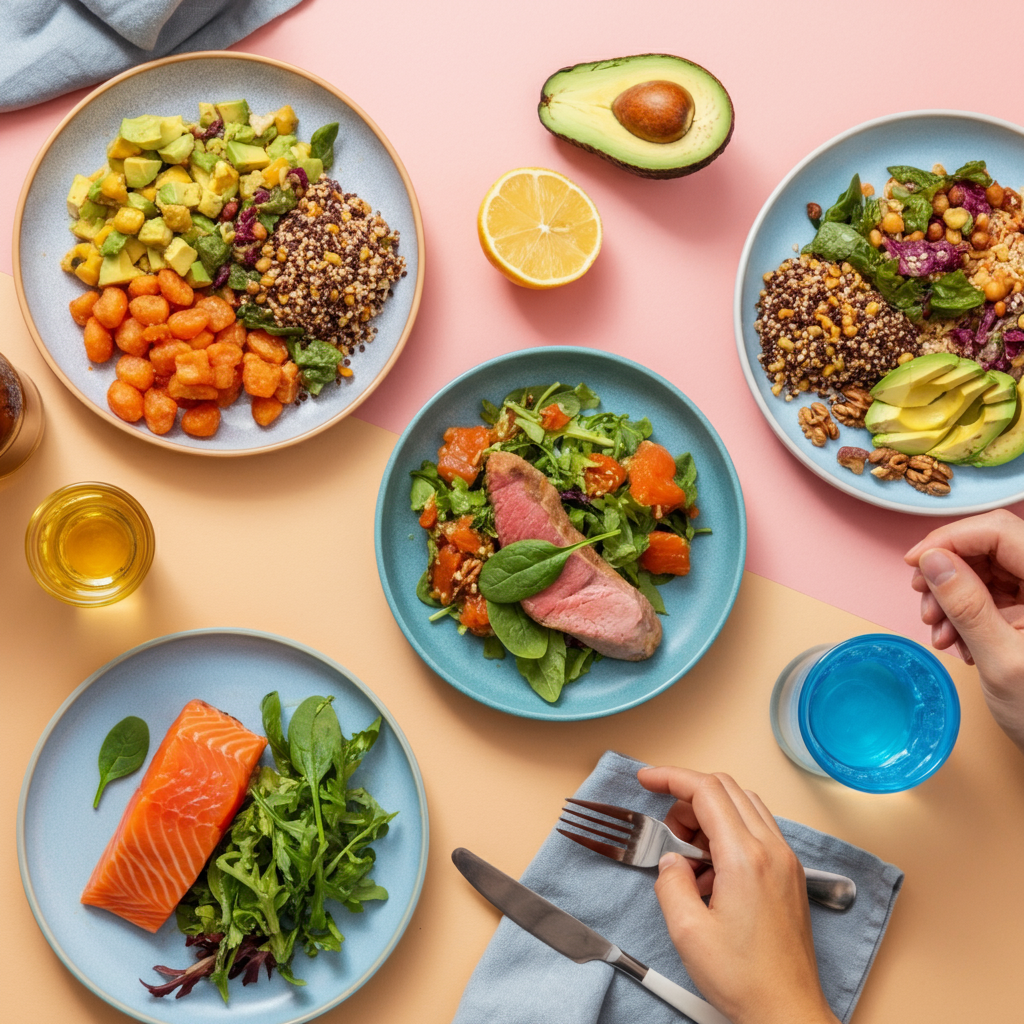
1. Include Healthy Fats
Healthy fats are high in calories and essential nutrients. They help with weight gain and provide a source of energy. Try these options:
- Avocados – High in monounsaturated fats and fiber. Add slices to salads or sandwiches.
- Nuts and Nut Butters – Almonds, walnuts, and natural peanut butter are excellent snack options.
- Seeds – Chia, flaxseeds, and sunflower seeds can be sprinkled on yogurt or oatmeal.
2. Add Protein-Rich Foods
Proteins build muscle and manage hunger. Incorporate these options into meals:
- Eggs – Hard-boiled eggs make a quick, protein-packed snack.
- Fatty Fish – Salmon and mackerel are rich in omega-3 fats, which are crucial for heart health.
- Greek Yogurt – Opt for full-fat versions that are not sweetened with added sugar.
3. Opt for Healthy Carbohydrates
Healthy carbs help you gain weight while keeping sugar levels stable. Examples include:
- Sweet Potatoes – A rich source of complex carbohydrates and vitamins.
- Quinoa – A complete protein and a healthy carb alternative to rice.
- Legumes – Lentils, chickpeas, and black beans are excellent choices, rich in fiber.
4. Incorporate Calorie-Dense Drinks
Drinks can help add calories when eating larger meals feels difficult:
- Create smoothies with banana, almond butter, and full-fat yogurt.
- Choose unsweetened protein shakes to add extra nutrition between meals.
5. Make Small, Frequent Meals
Eating smaller meals throughout the day avoids blood sugar spikes and improves digestion. Pair every meal with a balanced combination of protein, fats, and carbohydrates. For example:
- Morning snack: Whole-grain toast topped with avocado and cottage cheese.
- Afternoon snack: Trail mix with mixed nuts, dark chocolate, and dried fruit.
By following these strategies, gaining weight as a diabetic can be safe and effective while maintaining balanced sugar levels.
Is Butter Bad for Diabetics?
Butter is a staple ingredient in many diets. However, for diabetics, it’s essential to approach it with caution.
Butter is high in saturated fat, which can raise “bad” LDL cholesterol and increase the risk of heart disease, a common concern for people with diabetes. However, that doesn’t mean it must be entirely avoided. Here’s what you should know:
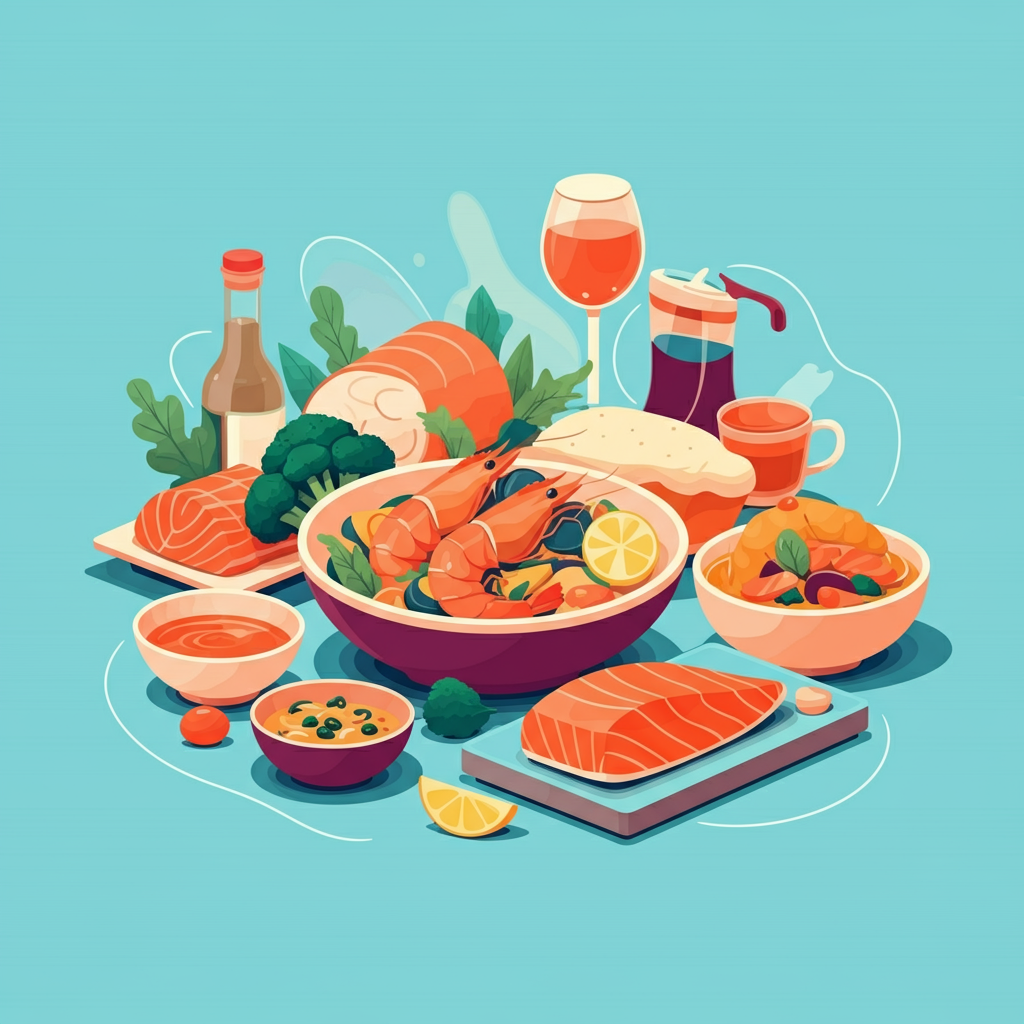
Why Butter Should Be Used in Moderation
High Saturated Fat Content
- Butter contains around 7 grams of saturated fat per tablespoon.
- Excessive saturated fat intake may contribute to insulin resistance over time.
Impact on Heart Health
- Saturated fats in butter are linked to higher cholesterol levels, which can affect cardiovascular health.
- Heart health is crucial for diabetics since they are more prone to related complications.
Healthier Alternatives to Butter
Choosing alternatives can provide the same flavor or texture while supporting better health outcomes. Some options include:
- Olive Oil – A heart-healthy source of monounsaturated fats.
- Avocado Spread – Packed with fiber, healthy fats, and nutrients.
- Nut Butters (almond, cashew) – Contain high-quality fats and protein. Ensure no added sugar.
Actionable Tips for Diabetics
Limit Portion Sizes
- Stick to 1-2 teaspoons of butter per meal to keep intake controlled.
Go Unsalted
- Unsalted varieties help manage sodium levels. Prevent excess salt in your diet.
Combine Butter Wisely
- Pair butter with whole-grain bread or steamed vegetables to add nutrients to your meal.
When is Butter Okay?
- Occasional Use: Butter can be included in small amounts as part of a balanced diet.
- Cooking Purposes: It adds flavor to dishes but consider combining it with oils low in saturated fats like canola oil.
Understand your body’s needs and consult with a healthcare provider to make informed choices about your diet. Small, intentional adjustments can have a big impact on your health.
Is Diet Coke Good for a Diabetic?
The question “Is Diet Coke good for a diabetic?” comes up often. Diet Coke is a sugar-free beverage, which might seem like a good option for people with diabetes. However, it’s essential to examine more closely how it may impact the body.
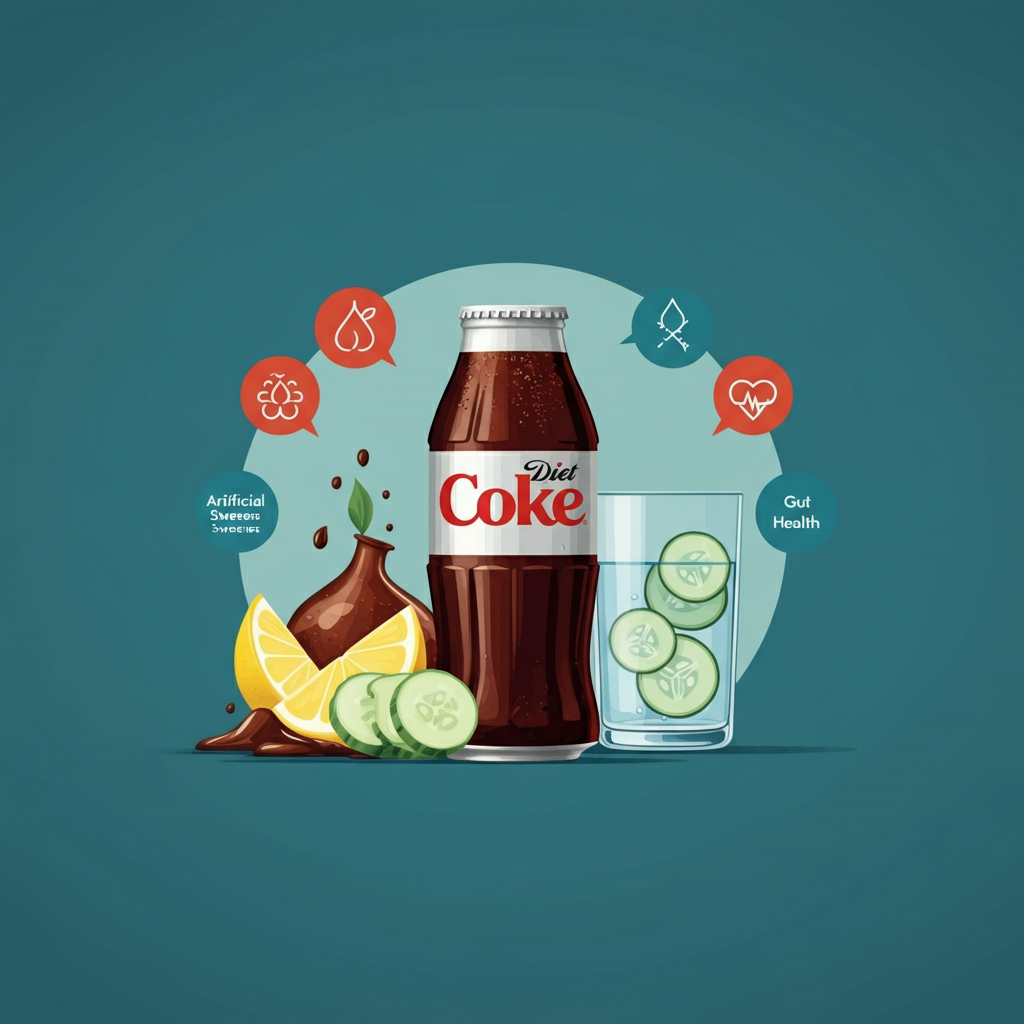
Things to Consider
No Sugar, But Artificial Sweeteners
- Diet Coke uses artificial sweeteners, such as aspartame or sucralose instead of sugar.
- While sugar-free, these sweeteners may impact insulin sensitivity over time.
Impact on Gut Health
- Artificial sweeteners have been linked to changes in gut bacteria.
- This could affect digestion and overall health.
Hydration Matters
- Staying hydrated is crucial for managing blood sugar levels.
- Water is always the best choice. If plain water feels dull, try flavoring it with lemon slices or cucumber.
Better Drink Choices
- Unsweetened beverages like herbal teas or sparkling water are great alternatives.
- Infuse plain water with natural fruits for a refreshing, healthy drink.
- Stick to drinks without artificial ingredients to support long-term health.
Diet Coke doesn’t directly raise blood sugar levels, but limiting its intake is better. Aim for natural, unsweetened drinks to stay hydrated and maintain good health.
Does Bacon Raise Blood Sugar?
Bacon itself does not directly raise blood sugar because it is low in carbohydrates. However, it is high in saturated fat and sodium, which can have an indirect impact on your overall health and blood sugar regulation over time. Here’s a breakdown:
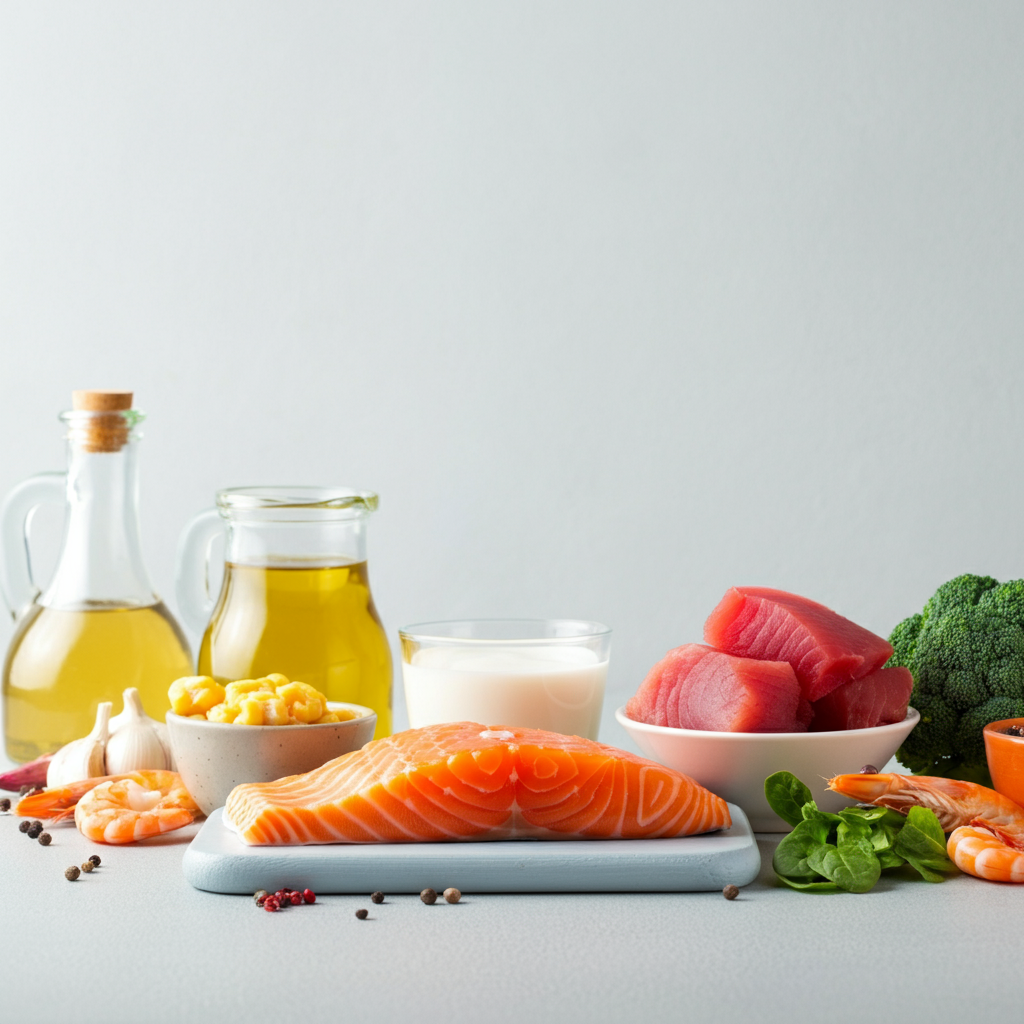
How Bacon Affects Blood Sugar
Low in Carbohydrates:
- Bacon contains very few carbs, so it doesn’t cause an immediate spike in blood sugar.
- This makes it okay in moderation for individuals on low-carb diets or managing diabetes.
High in Saturated Fats:
- Regular consumption of bacon adds more saturated fats to your diet.
- High saturated fat intake may lead to weight gain and insulin resistance.
Excess Sodium Levels:
- Bacon is high in sodium, which can lead to increased blood pressure.
- High blood pressure is linked to complications in people with diabetes.
Better Options to Consider
If you’re concerned about the impact of bacon on long-term health, here are some alternatives and tips:
- Try Turkey Bacon: Lower in fat and calories compared to traditional pork bacon.
- Choose Leaner Cuts: Select cuts with less visible fat to reduce saturated fat intake.
- Limit Portion Sizes: Stick to a few slices to enjoy bacon responsibly.
Healthy Eating Tip
Pair bacon with fiber-rich foods, such as whole-grain toast or leafy greens. This helps stabilize blood sugar levels and improves digestion.
Bacon doesn’t directly raise blood sugar, but overconsumption affects overall health. Eating it in moderation and opting for healthier alternatives ensures balance.
How to Prepare Seafood for Diabetes Management
Properly preparing seafood is crucial for supporting a balanced diet in diabetes management. Seafood provides lean protein, heart-healthy omega-3 fatty acids, and essential nutrients while being naturally low in carbohydrates.
Here’s how to ensure your seafood dishes are diabetes-friendly:

Healthy Cooking Methods
- Grill Seafood for Flavor: Grilling fish, such as salmon or mackerel, brings out their natural flavor. Use olive oil for added healthy fats.
- Steam or Boil for Low-Fat Options: Steaming shrimp or boiling crab keeps the fat content minimal while preserving nutrients.
- Air Fry Instead of Deep Frying: Air frying reduces unnecessary oil while giving shrimp or tilapia a crispy texture.
- Bake Using Herbs: Baking cod or halibut with herbs like dill or parsley enhances the flavor without the need for heavy sauces.
Portion Control Guidelines
- Stick to 3–6 ounces of cooked seafood per serving.
- Balance your meal with non-starchy vegetables, such as roasted asparagus or a side salad.
Key Question: Does Seafood Raise Cholesterol?
Seafood, such as shrimp and crab, contains dietary cholesterol, but this doesn’t directly elevate blood cholesterol levels in most people. For heart health, focus on seafood rich in omega-3 fatty acids, like salmon, sardines, or trout.
Actionable Tips
- Replace breaded fish sticks with grilled or baked fish to avoid unnecessary carbs and fats.
- Avoid creamy sauces; instead, top your seafood with a squeeze of lemon or spicy salsa for flavor.
By preparing seafood thoughtfully, you can enjoy delicious meals that align with your diabetes management goals.
Risks and Considerations
Seafood is a healthy option, but it is essential to be mindful of certain risks. For individuals managing diabetes, understanding what to watch for and how to mitigate risks can help ensure that seafood remains a safe and nutritious part of the diet.
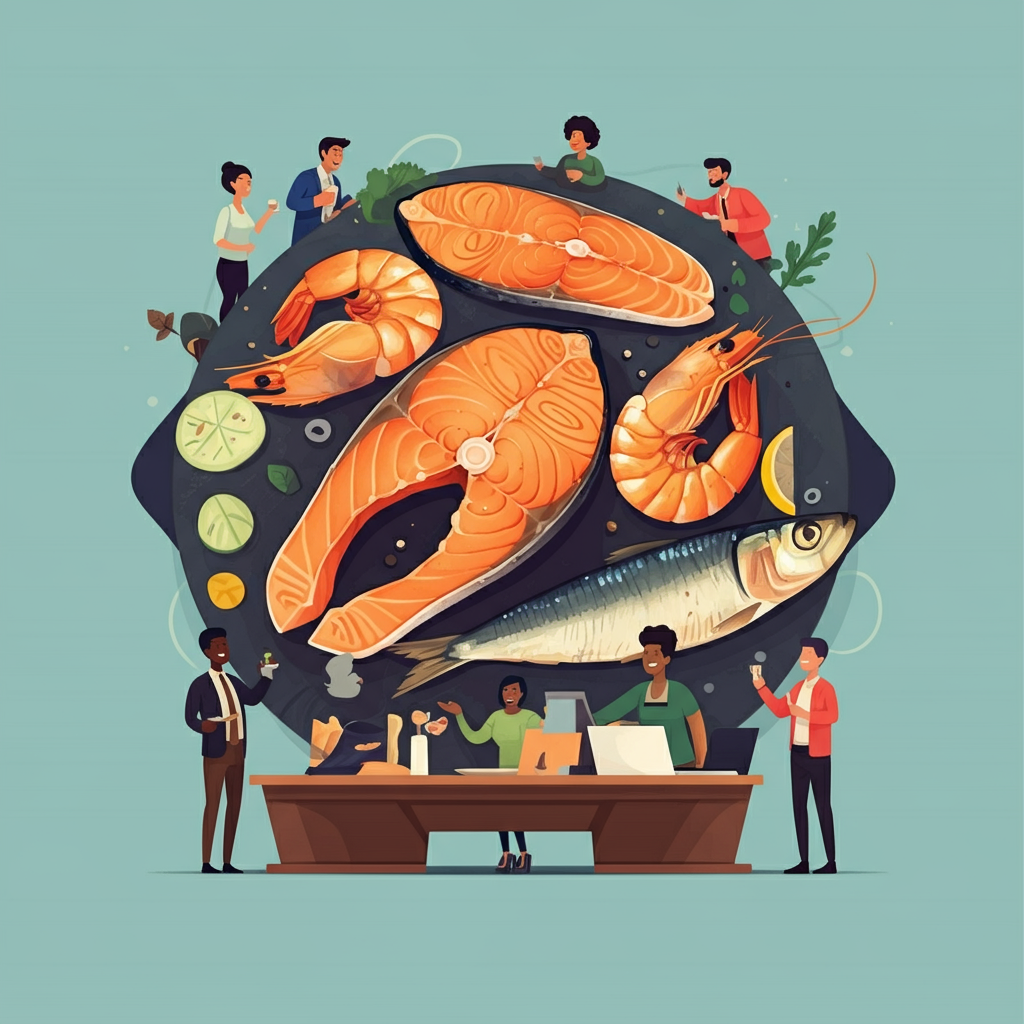
Potential Risks of Seafood Consumption
Mercury Contamination:
- Some seafood, like swordfish, shark, and king mackerel, contains high levels of mercury.
- Mercury can affect the nervous system, and frequent exposure is not recommended.
- For safer options, choose fish like salmon, sardines, or shrimp low in mercury.
Excess Sodium in Processed Seafood:
- Canned, smoked, or processed seafood often has added salts to enhance flavor and preservation.
- Excess sodium can result in high blood pressure, complicating diabetes management.
Allergic Reactions:
- Some people are allergic to shellfish or seafood. Symptoms can include rashes, swelling, and difficulty breathing.
How to Mitigate Risks
- Choose Low-Mercury Options: Opt for fish low in mercury, especially if eating frequently.
- Limit Processed Seafood: Reduce your intake of canned or smoked seafood and check the sodium levels on the labels. Try sourcing fresh fish when possible.
- Watch Portion Sizes: Overeating seafood, even the healthy kinds, can lead to imbalances in nutrient intake.
- Be Allergy-Cautious: If unsure, consult an allergist before trying new seafood.
Actionable Tips for Safer Seafood Consumption
- Read the nutrition label for sodium and other additives before purchasing seafood.
- Steam, grill, or bake fish instead of frying it to retain natural benefits.
- Incorporate seafood into your weekly diet in balance with other protein sources, such as beans or chicken.
With proper precautions and informed choices, seafood can remain an excellent addition to your diabetes-friendly diet.
Real-Life Tips for Choosing Seafood
Practical Steps for Smarter Seafood Choices

Choosing the right seafood is essential for your health and flavor enjoyment. Follow these clear tips to make smart and safe choices:
1. Prioritize Fresh, Wild-Caught Seafood
- Fresh fish should smell like the ocean, not like anything sour or overwhelming.
- Look for wild-caught seafood over farmed varieties for a more nutrient-dense option.
2. Check Labels Carefully
- Frozen or canned seafood is convenient but often contains added sodium or preservatives.
- Look for labels that read “low sodium” or “no added preservatives” for healthier choices.
3. Know Where Your Seafood Comes From
- Support local fisheries or sustainable brands certified by organizations like the Marine Stewardship Council (MSC).
- Sustainable practices help protect overfished populations and deliver higher-quality seafood.
4. Create Balanced and Delicious Meals
- Grill salmon with quinoa and steamed broccoli for a nutritious dinner.
- Add sautéed shrimp to a leafy mixed green salad with a vinaigrette dressing.
- Bake cod with olive oil, lemon juice, and herbs for a heart-healthy entree.
5. Storage and Safety Tips
- Store seafood properly in the refrigerator or freezer to preserve freshness.
- Cook seafood to the correct internal temperature (145°F for most fish).
By focusing on freshness, nutrition, and sustainability, you can enjoy seafood that not only tastes great but supports your overall well-being and the environment.
FAQs
What types of seafood should diabetics avoid?
Diabetics should avoid seafood heavily breaded, fried, or prepared with sugary sauces, as these can increase blood sugar and calorie levels. Opt for grilled, baked, or steamed options instead.
Is shellfish bad for people with diabetes?
Shellfish like shrimp, crab, and lobster can be part of a diabetic-friendly diet, but watch out for how they’re prepared. Avoid butter-heavy or creamy sauces that may add unhealthy fats and sugars.
Can diabetics eat high-mercury seafood?
Seafood high in mercury, such as swordfish, king mackerel, or tilefish, should be limited or avoided, as high mercury levels can pose health risks, particularly when consumed frequently.
Does smoked or canned seafood affect blood sugar?
Smoked or canned seafood may contain high levels of sodium, preservatives, or added sugars, so carefully read nutrition labels and choose options packed in water rather than oil.
Should diabetics limit their seafood intake?
Seafood is generally a good choice for diabetics because of its low carbohydrate and high protein content. However, balance is key, so pair seafood with fiber-rich vegetables and whole grains for a well-rounded meal.


Leave a Comment